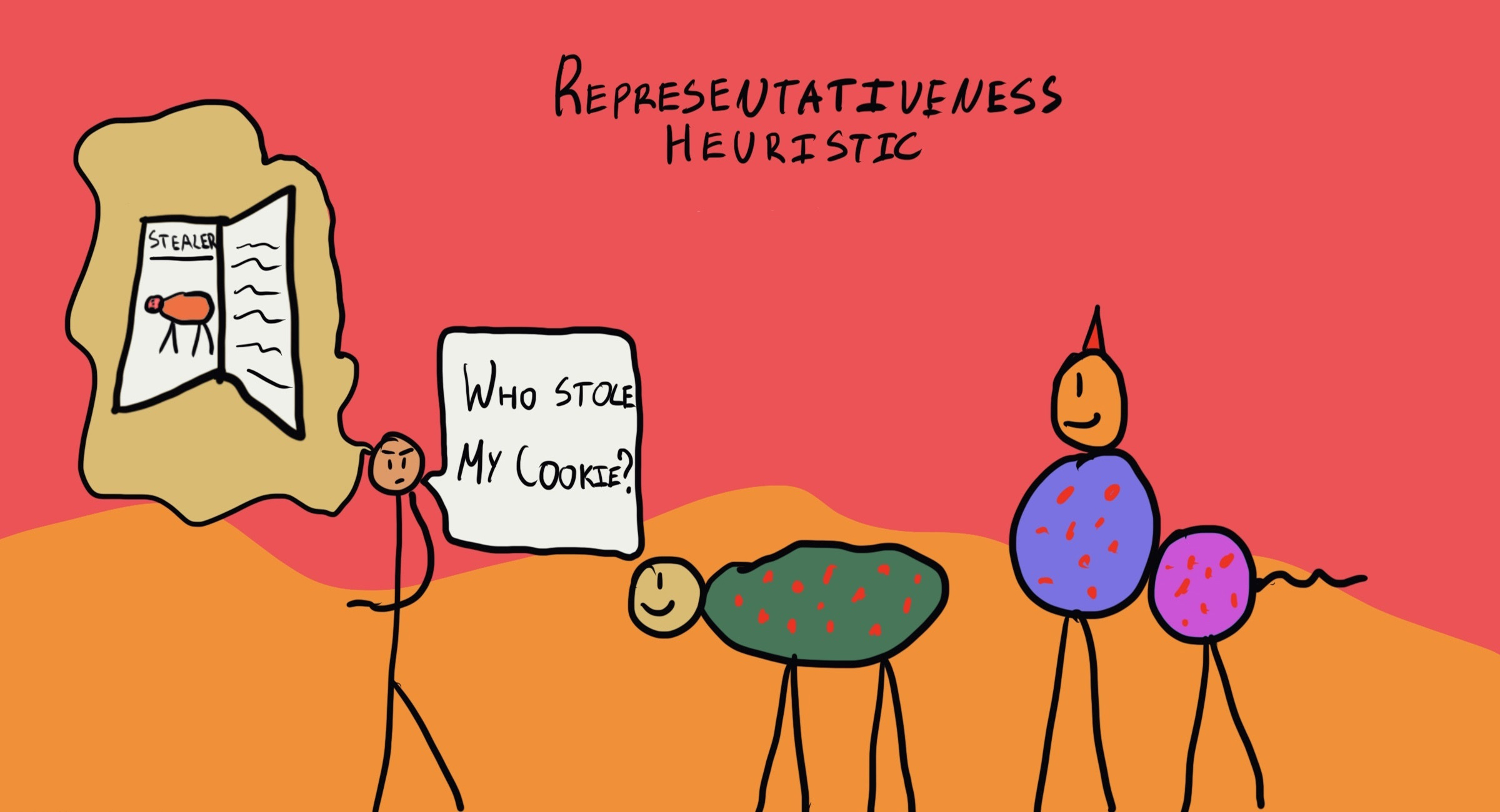The representativeness heuristic is a cognitive bias that occurs when individuals make judgments or decisions based on how closely something resembles a prototype or stereotype, rather than on more objective information or probability. People tend to use mental shortcuts and rely on similarity or typicality to assess the likelihood of an event or the category to which something belongs.
Explanations:
The representativeness heuristic is rooted in our cognitive efficiency – our brains often favor quick, intuitive judgments over more systematic analysis. By categorizing things based on their resemblance to a prototype or stereotype, we can make decisions rapidly.
Examples:
Judging People: Assuming someone is a software engineer because they wear glasses and are introverted, which fits the stereotype, even if there’s no concrete evidence.
Predicting Outcomes: Believing that a coin is more likely to land heads after a series of tails, even though each flip is independent and has a 50% chance.
Categorizing Businesses: Assuming a trendy-looking cafe is more likely to have high-quality coffee, even without tasting it.
Solutions:
Critical Thinking: Encourage critical thinking and awareness of the representativeness heuristic. Consider alternative possibilities and gather more information before making judgments.
Statistical Analysis: When assessing probabilities or making predictions, rely on statistical data and probabilities rather than relying solely on perceived resemblance or stereotypes.
Question Assumptions: Challenge assumptions and stereotypes to avoid relying on the representativeness heuristic when making judgments about individuals or situations.
Diverse Exposure: Seek diverse experiences and exposures to different people, ideas, and information to broaden your perspective beyond narrow prototypes and stereotypes.
Addressing the representativeness heuristic involves being aware of the natural tendency to rely on resemblance and stereotypes when making judgments and striving to base decisions on more objective and accurate information.
